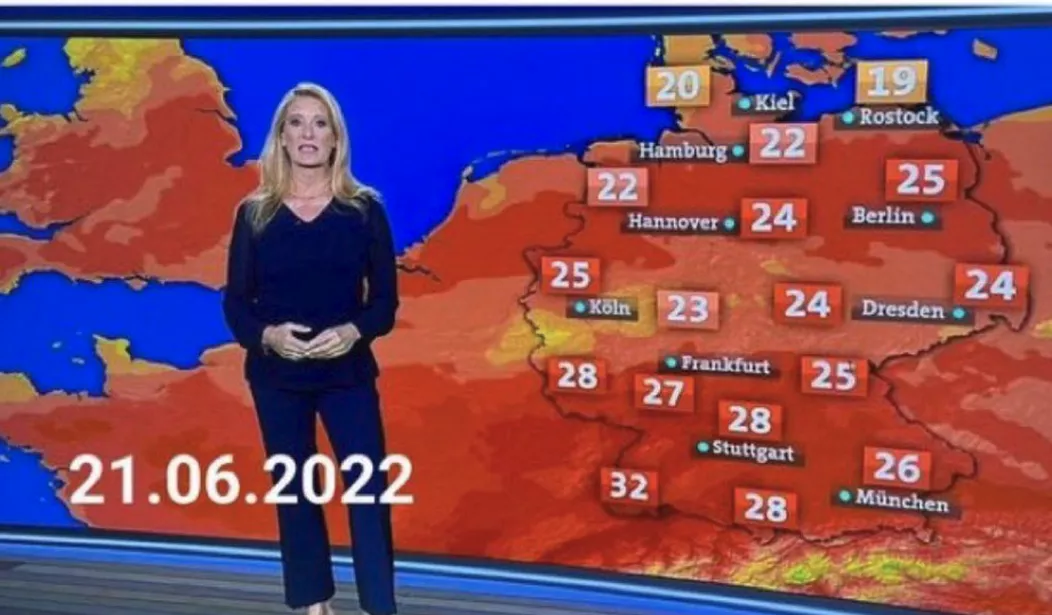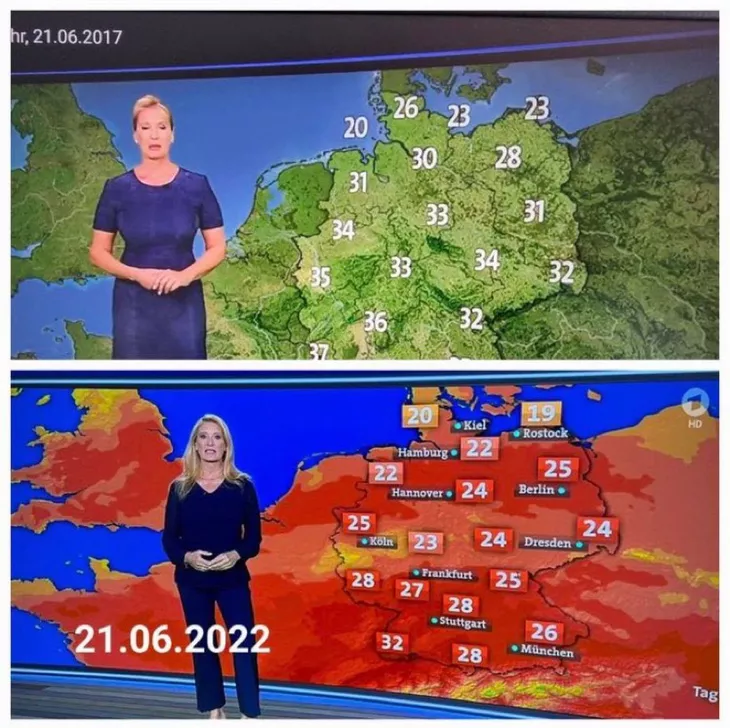Top News
Looking stupid while using facts to persuade by deceiving

Yes, I know the headline is confusing as hell, but I couldn’t figure out exactly how to describe what I am writing about here. Bear with me.
A controversy and a well-deserved ratio began brewing yesterday and in the lifetime of an internet spat it has stuck around for longer than most.
Brynn Tannehill, an author and extreme partisan-derived dropped a bomb that blew people away because of how stupid her tweet made her look, despite being technically correct once she explained herself.
Let’s take a look.
On its face the tweet is absurd. Each of us experiences temperatures above 90 degrees every summer, and 95 degrees can sometimes be the temp of a summer night in parts of the US during a heat wave. As a former Tucson boy I can tell you that I hated hot days, but somehow survived them without damage. The big thing you have to worry about is dehydration.
Before I rip Tannehill apart and assign some well-deserved blame, let me give her a bit of credit: hidden in her map and at the end of her rather long alarmist thread she explains that she is talking about a specific and never used in common discourse measure: wet bulb temperature, which is temperature measured in 100% humidity. It is a useful temp for weather forecasters and a few others, but irrelevant to our daily lives. And, indeed, at wet bulb temps of 95 degrees the human body cannot shed heat fast enough for the body to continue functioning.
A wet bulb temperature translated to real life is over 130 degrees. I doubt DesMoines or even Miami is in much danger of becoming incapable of supporting plant or animal life, and as the Persian Gulf shows people live in such conditions.
“Huhuh, that’s why we have air conditioning,” say smug people like Ben Shapiro, who completely miss the point, while insisting climate change isn’t real, and neither are the laws of physics dealing with heat exchange.
There’s a huge problem with that. 3/m
— Brynn Tannehill (@BrynnTannehill) July 24, 2023
First of all, Ben Shapiro is spot on. Human beings have technology–sometimes very very simple technology–to deal with conditions that are unsurvivable without doing anything at all. This is why human beings can and do live in places that would be deadly if you are outside, naked, tied to the ground unable to move, and left there for hours.
As the Persian Gulf example shows, Brynn uses actually proves. People actually do live in such places where excessive heat is a problem, and living in Minnesota I can tell you that if I walked outside without spending time bundling up at many points in winter I would die pretty quickly. Brynn herself lived in such conditions and while her brain appears to be cooked, she is apparently otherwise OK. She has, after all, written books and has quite a following on Twitter for her partisan rants.
What happens when wave of heat start mass killing people in Central America? As the waves of climate refugees stream north?
I’m sure conservative millionaires assume they can ride it out on their wealth, but they fail to grok how interconnected things are. 5/n
— Brynn Tannehill (@BrynnTannehill) July 24, 2023
Brynn of course completely ignores the facts about adaptability, and is suggesting that climate change is going to cause temperatures by 10s of degrees is hardly what even the most alarmist scientists are saying. The average temp of the globe even in periods where CO2 has been 3x today’s the planet flourished and likely had more living beings, and certainly more biomass, than today. So her scenario is ridiculous as are her warnings.
We do our farming in temperate zones, not the Persian Gulf, and our temperate zones are not in danger of
First it happens slowly, then all at once.
And here’s the problem: because CO2 takes 100 years + to breakdown or get reabsorbed, more heating is already baked into the equation based on current levels. Even if we zeroed out emissions today, we’ll still have rising temps. 7/n
— Brynn Tannehill (@BrynnTannehill) July 24, 2023
And we are doomed! Doomed I tell you!
All this is bad enough, but she really deserves the ratio for the first tweet, despite her being technically correct.
First of all, it wasn’t until the 8th tweet that she explained she was talking about “wet bulb temperature,” and on this she is resting her defense for what appears to be a ridiculous assertion–that a temp of 95 degrees is fatal. 98% of her readers won’t get to that tweet; it is like dropping the key fact in the 35th paragraph of a story, fundamentally changing everything that came before. It is an attempt to deceive by leaving out the most important fact until the end.
Most people reading her tweet look at it and laugh, while her acolytes either struggle to defend her or go on the attack, accusing everybody of being a climate denier. This was the goal–keep people panicked and hating the opposition.
It’s summer in the Northern Hemisphere so the heat hucksters are out in force. Bright red maps and fake temperature ‘records’ drive a climate panic pushing us towards an anti-energy Net Zero world. https://t.co/9H14dtxGwV
— Toby Young (@toadmeister) July 18, 2023
What Tannehill is doing here is dropping a shocking but irrelevant fact and trying to convince people that it says something which, if you understood it in context, doesn’t mean anything like what she wants you to believe. It is a pretty common tactic, although executed very poorly here. Her rhetorical mistake was that our daily experience contradicts the claim that she hoped we would take seriously. Everybody knows that 95 degrees is easily survivable and a cool summer day in Phoenix.
Yet this is a tactic used every day–make assertions that are if you are an expert, technically true, but utterly deceptive. People who are looking for confirmation of their prejudices latch onto it as if it demonstrates anything, when in fact it is as relevant as the statement “If you put people in an oven turned to 200 they will die soon.”
‘With their ridiculous, red weather maps and their manipulative climate hysteria, most of the dangerous hot air at the moment is coming from your TV set.’@MrMarkDolan
Freeview 236, Sky 512, Virgin 604
GB News on YouTube https://t.co/Wa58gYHxmd pic.twitter.com/jKHMAes55p
— GB News (@GBNEWS) July 22, 2023
Yeah, so what? If you throw somebody out naked in 50-degree temps and leave them there tied to the ground, they will die. What does that have to do with anything?
Weather maps are now produced to scare the bejeezus out of us, and that is the more sophisticated version of this tactic:
These flame-coloured weather maps will backfire. After the last three years we recognise propaganda when we see it. If they’re behaving like this we know they’re lying. This is not about the planet. It’s about control. They locked us down once. They’re never doing it again. pic.twitter.com/oOmogkViLQ
— Pat Condell (@patcondell) July 21, 2023
The deep red is temps in the 90s, and the red is temps in the 70s.
Big scary.
My fave is this one, where higher temps a few years ago were in green, while substantially lower temps are now in scary red. Look at the colors and you get one message. Look at the temps and the truth is the opposite.

It’s BS, but it works with a lot of people. This is, by the way, exactly the same thing as what Tannehill did–provide a real fact (the temp) in the most deceptive way possible, expecting you not to notice the reality underneath.
Follow the science, and often enough what you find is an agenda–often paid for by the government.
Read the full article here


















